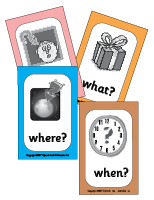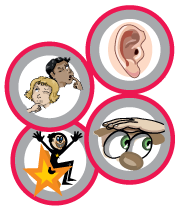Some children need more than just the words. Sarah Wall reflects on visual support and how to use it to best effect.
What is visual support?
When we speak, the message has gone as soon as it has been spoken. For this reason, many pupils with language difficulties find it hard to retain information that they have heard. Visual support provides an extra cue that lasts much longer than the spoken word. The most commonly used forms of visual support are: Signs, gestures or formalised systems of hand signs and Symbols, pictures used to represent a concept.
Who would benefit from visual support?
Visual support will benefit every child in the class. People take in information in different ways. Many normally developing children prefer to take in information visually so using visual support will help them as well as the children with language difficulties. Visual support is particularly useful for children with: Language problems particularly sequencing and comprehension difficulties; Memory difficulties; ADHD; Autistic spectrum disorders; EAL/ESL pupils.
When to use visual support?
Any time, any place, any activity! This powerful strategy works well in almost any classroom situation. Try using symbols to emphasis key words when giving a series of instructions or when introducing new vocabulary. Use sentence planners to help pupils structure their written work or promote independence though the use of task management boards.
Traffic Light System

Use red, amber and green flash cards for pupils to show whether or not they have understood. Encourage pupils to put a red card on the table if they need help.
Here are two things you can try:
Question Cue Cards
Use colour coded question cards to help pupils work out what sort of answer is expected of them, e.g. a place or time word. Use during whole class discussion or during reading.

Good Listening & Talking Cards
Use listening tokens to teach the rules of good listening and to give pupils feedback about their listening skills. Keep a tally chart on the wall for the best listener of the day.

Download these FREE resources here.
Please login to view this content
Login